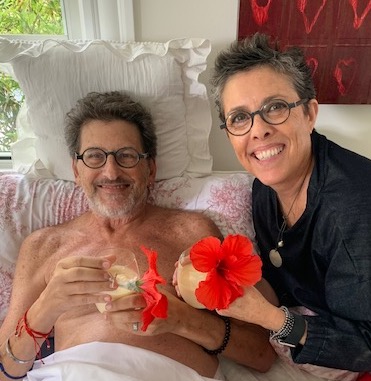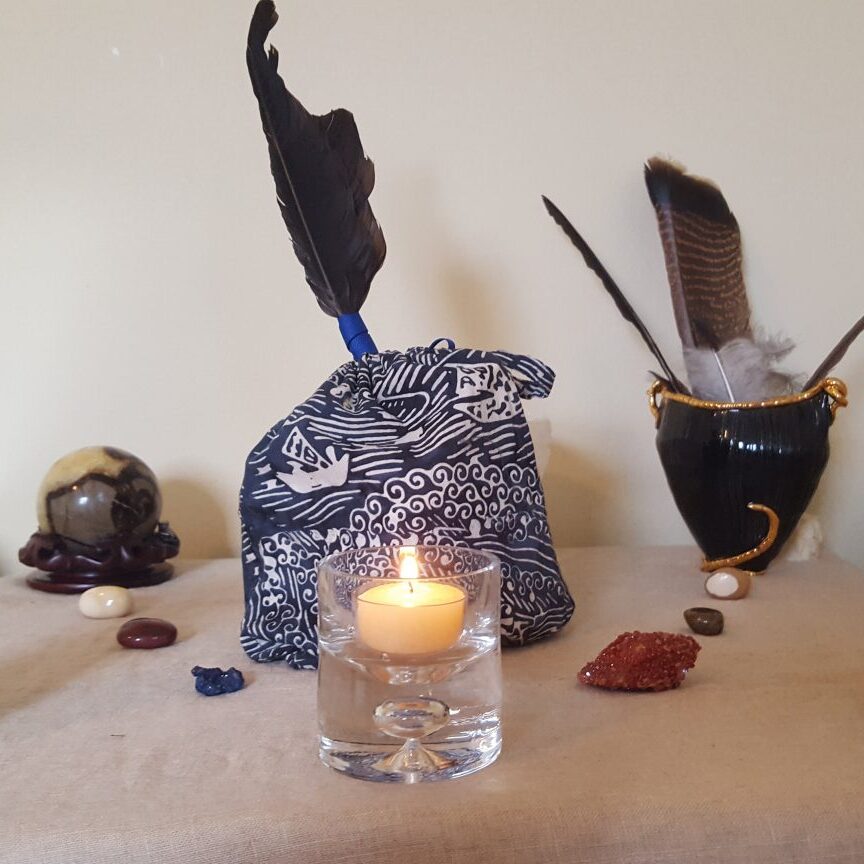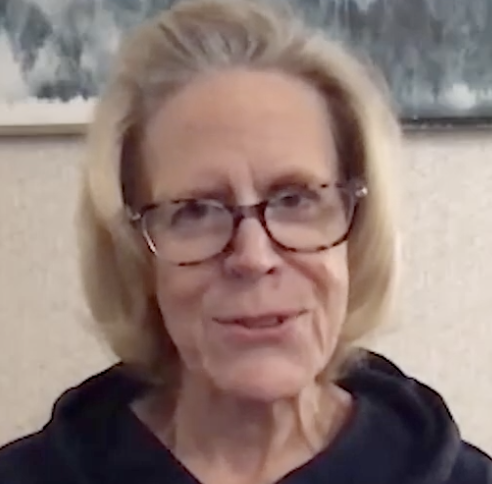Alison Clay-Duboff started advocating for for Death with Dignity across the country after her husband, Ken, used aid in dying in California in 2021.

Every day we have the absolute liberty to make thousands of choices. Most of them are mundane — what toothpaste to use in the morning, what color shirt to wear, a skirt or dress, what to eat for breakfast, and how to behave towards others. The majority of these choices are deeply taken for granted.
But have you ever stopped to contemplate that if you became terminally ill, whether you could make the choice to legally choose when and how you die? That you could design your death to be exactly what you want it to be — who would be present, what kind of music to hear in the final moments, the scent of candles you’d like your soul to enjoy as you pass from one realm to the next? What would the atmosphere look like? Would you like to be surrounded by your four-legged family members?
Devastating News
Ken was an adventurous soul. He devoured life, he loved our far-flung travels and our sincere attempts to experience each other’s life travel goals. Ken was profoundly moved by our two trips to India. He hoped we would go back. We settled on Ireland before a third trip to Mother India. But first, the beautiful country of Peru and the Amazon awaited us.
It wasn’t long after we got home from Peru that I started noticing some physical changes with Ken. Small things at first — like when he stopped polishing the shower and squeegee-ing the glass walls. He took great pride in his custom-built glass frameless shower, and it was very unusual that he was not taking care of it the way he normally did, but I said nothing. Then, one day, he was walking one of our huge Bouvier dogs, and got knocked over. I wasn’t with him, so I didn’t witness it, thank goodness, but he had a hard time getting up, he told me later.
He started having physical symptoms as well — night sweats, difficulty catching his break, uneven breathing, and worst of all, he started stuttering because of his difficulty breathing. We tried to make light of the stuttering situation, as his baby brother had suffered from stuttering his entire life, so his younger sibling appreciated this playful revenge on his big brother.
Then things got worse, and fast. He developed digestive issues. His feet started turning purple. He developed orthostatic hypotension, causing him to frequently pass out. It was this amalgamation of seemingly unrelated unidentifiable symptoms that made his diagnosis almost impossible.

We searched in vain for 15 months, trying to find an answer to what ailed him. We thought he might have picked up a scary tropical bug from India or caught something from our recent two weeks quarantined on the Amazon, but that’s another story. Tragically, neither of those theories were true, and thus, the dreams we had of something identifiable, and more importantly, treatable, were eliminated. By the time his actual diagnosis was presented to us, it was too late.
We found out that Ken had a rare form of a blood disorder that surfaced in conjunction with a non-Hodgkin lymphoma of his bone marrow. This prognosis was absolutely devastating, as you can imagine.
When we were handed his terminal prognosis, we retreated home on hospice, envisioning the unimaginable waiting game until death would claim his body, and thus my heart.
Ken, at only 69 years young and having found each other some 20 years before, had a lot of living yet to experience with me. This prognosis — knowing he had less than 6 months to live — weighed heavy on our collective heart. Depression set in for us both.
And then….
Ken’s Choices
The universe suddenly opened up to give Ken the miraculous wings of choice.
On a sunny, beautiful June afternoon, I was speaking privately to Ken’s hospice nurse about the landscape of his disease progression, and she explained an option that would avoid a death which would likely be undignified and inhumane. She introduced me to Death with Dignity.
As I absorbed this new (to me) possibility for Ken to access medical aid in dying, I realized I held immense power in my hands. There was no way that Ken would’ve been aware of Death with Dignity as an option, as we had never discussed it. But I knew as I stood there on that beautiful June morning, once I handed him this information, he would absolutely choose this route.
I paused, holding onto this power only for a moment, until I went into the house, sat down at my husband’s side, and explained everything I had just learned about Death with Dignity, and that it was likely available to him.
Oh, so ironically, upon the last syllables exiting my mouth, I could physically see him begin to live again. A peace and calm came over him, and I knew this is what was best for him.
Planning With Autonomy
One thing that Death with Dignity gave Ken was his power back. Over the next few days, we sat together and composed his obituary. Ken planned a massive living memorial to celebrate his life, with full control over which friends to invite, from near and far, to come say hello and goodbye one last time.

The dichotomy of planning his dying, while feeling more alive than ever, was amazing to watch.
Control. He would finally be able to exert control over his body, which for so long, he had not had.
My husband got to design his own death and departure. If Death with Dignity was not an option for him, this wouldn’t have happened.
We always knew we were very fortunate to reside in Southern California. But never did we ever realize how ultimately empowered we were to be residents of this fantastic progressive state that legalized Death with Dignity in 2016.
His Last Day
My darling, hysterical, loving, and unique husband took many of his final breaths after ingesting the prescribed cocktail of the lethal aid-in-dying medications on August 3, 2021.
On that day, we had a little intimate gathering. It was very confusing and difficult for our friends to accept, but my sister and Ken’s brother were there, as well as the death doula provided for us during hospice. We felt the support we needed.
I don’t know how I kept it together, but I knew I had to for Ken.
That’s what love truly is…the power to persevere in the darkest of moments.
When the prized Hibiki and champagne was drained, and small orations by our guests concluded, the group departed. The death doula, Sean, told me later that he could “read” Ken’s body language; he saw his resignation, knowing that this was really going to happen. Sean also shared that after some time, Ken’s physicality demonstrated acceptance.
On our bed, with me to Ken’s left, he was ready. He had taken the anti-nausea meds an hour prior. Nurse Nick mixed the powder into apple juice, and I spooned Ken some sorbet, which is intended to numb the throat for the onslaught of burning bitterness to follow. Ken was never good at taking liquid medication –like a baby fussing and complaining. But on this August day, his last day, he chugged that potion back in one giant gulp. I was astonished.
Ken told me he would squeeze my hand if he could, but his hand never embraced mine.
His last words were, “Wow, that did a number on my throat.” Five and a half hours of loud noises and very unsettling gasping, and after the gentle presence of our two dogs added support, Ken passed.
It was not easy for me to witness.

My Role in This Movement
There is still much that needs to be done to bring about awareness and to possibly refine the physical processes of medical aid in dying. Advances are continuing to be made, and I am thankful for this.
This act of love was the most challenging of my life, of my existence, but I move forward with my life knowing that I gave him the ultimate gift. I walked him to death’s door with love and acceptance.
I let him choose what was best for him — knowing he would have stuck around longer, and needlessly suffered more, if I had just asked.
Personal stories power our movement. The best way to shift attitudes, correct misconceptions about Death with Dignity, and help lawmakers understand why it matters is to share stories of real experiences. Share your story here.

